 W
W"Ironbottom Sound" is the name given by Allied sailors to the stretch of water at the southern end of The Slot between Guadalcanal, Savo Island, and Florida Island of the Solomon Islands, because of the dozens of ships and planes that sank there during the Battle of Guadalcanal in 1942–43. Before the war, it was called Savo Sound. Every year on the battle's anniversary, a U.S. ship cruises into the waters and drops a wreath to commemorate the men who lost their lives. For many Navy sailors, and those who served in the area during that time, the waters in this area are considered sacred, and strict silence is observed as ships cruise through.
 W
WUSS Aaron Ward (DD-483) was a Gleaves-class destroyer in the service of the United States Navy. She was the second Navy ship named in honor of Rear Admiral Aaron Ward. She sank on 7 April 1943 in a shoal near Tinete Point of Nggela Sule, Solomon Islands during Operation I-Go. Her wreck was discovered on 4 September 1994.
 W
WAkatsuki was the twenty-first Fubuki-class destroyer, or the lead ship of the Akatsuki class, built for the Imperial Japanese Navy in the inter-war period. When introduced into service, these ships were the most powerful destroyers in the world. They remained formidable weapons systems well into the Pacific War.
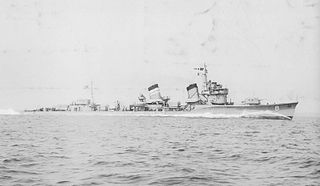 W
WAsagiri was the thirteenth of twenty-four Fubuki-class destroyers, built for the Imperial Japanese Navy following World War I. When introduced into service, these ships were the most powerful destroyers in the world. They served as first-line destroyers through the 1930s, and remained formidable weapons systems well into the Pacific War.
 W
WThe second USS Astoria (CL/CA-34) was a New Orleans-class cruiser of the United States Navy that participated in both the Battle of the Coral Sea and the Battle of Midway, but was then sunk in August 1942, at the Battle of Savo Island. Astoria was the first Astoria-class cruiser to be laid down but launched after and received a hull number higher than New Orleans, which the class was renamed for after Astoria sunk.
 W
WUSS Atlanta (CL-51) of the United States Navy was the lead ship of the Atlanta class of eight light cruisers. She was the third Navy ship named after the city of Atlanta, Georgia. Designed to provide anti-aircraft protection for US naval task groups, Atlanta served in this capacity in the naval battles Midway and the Eastern Solomons. Atlanta was heavily damaged by Japanese and friendly gunfire in a night surface action on 13 November 1942 during the Naval Battle of Guadalcanal. The cruiser was sunk on her captain's orders in the afternoon of the same day.
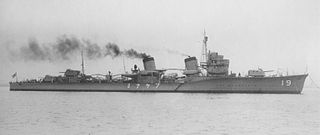 W
WAyanami was the eleventh of twenty-four Fubuki-class destroyers, built for the Imperial Japanese Navy following World War I. When commissioned, these ships were the most powerful destroyers in the world. They served as first-line destroyers through the 1930s, and remained formidable weapons systems well into the Pacific War.
 W
WUSS Barton (DD-599) was a Benson-class destroyer in the United States Navy during World War II. She was the first ship named for Admiral John Kennedy Barton.
 W
WUSS Benham (DD-397) was the lead ship of her class of destroyers and the second ship of the United States Navy to be named for Andrew Ellicot Kennedy Benham. It missed the Attack on Pearl Harbor, being an escort for the aircraft carrier USS Enterprise on its way to Midway Atoll at the time. It also served off Hawaii during the Doolittle raid, rescued survivors from several ships, and operated during the Battle of Midway and the landings on Guadalcanal, among other missions. It was torpedoed and rendered unusable, for which she was sunk at the end of 1942.
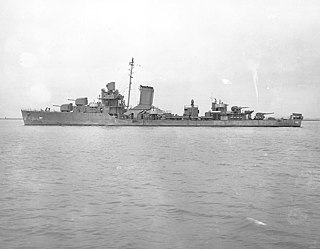 W
WUSS Blue (DD-387), a Bagley-class destroyer, was the first United States Navy ship of that name, in honor of Rear Admiral Victor Blue (1865–1928). Blue served during World War II. She was launched 27 May 1937 by Norfolk Naval Shipyard; sponsored by Miss Kate Lilly Blue, sister of Rear Adm. Blue; and commissioned 14 August 1937, Lieutenant Commander J. Wright in command.
 W
WHMAS Canberra (I33/D33), named after the Australian capital city of Canberra, was a Royal Australian Navy (RAN) heavy cruiser of the Kent sub-class of County-class cruisers. Constructed in Scotland during the mid-1920s, the ship was commissioned in 1928, and spent the first part of her career primarily operating in Australian waters, with some deployments to the China Station.
 W
WUSS Colhoun (DD-85/APD-2) was a Wickes-class destroyer in the United States Navy during World War I and later redesignated APD-2 in World War II. She was the first Navy ship named for Edmund Colhoun.
 W
WUSS Cushing (DD-376) was a Mahan-class destroyer in the United States Navy before and during World War II. She was the third Navy ship named for Commander William Barker Cushing (1842–1874).
 W
WUSS De Haven (DD-469) was a Fletcher-class destroyer of the United States Navy, the first Navy ship named for Lieutenant Edwin J. De Haven USN (1819–1865). De Haven was the first Fletcher-class ship lost in World War II, having been in commission only 133 days.
 W
WUSS Duncan (DD-485), a Gleaves-class destroyer, was the second ship of the United States Navy to be named for Silas Duncan, who was severely wounded by enemy fire which caused the loss of his right arm during the Battle of Lake Champlain on 11 September 1814.
 W
WFubuki was the lead ship of twenty-four Fubuki-class destroyers, built for the Imperial Japanese Navy following World War I. When introduced into service, these ships were the most powerful destroyers in the world. They served as first-line destroyers through the 1930s, and remained formidable weapons systems well into the Pacific War. Fubuki was a veteran of many of the major battles of the first year of the war, and was sunk in Ironbottom Sound during the Battle of Cape Esperance in World War II.
 W
WFurutaka was the lead ship in the two-vessel Furutaka-class of heavy cruisers in the Imperial Japanese Navy. The ship was named after Mount Furutaka, located on Etajima, Hiroshima immediately behind the Imperial Japanese Navy Academy. She was commissioned in 1926 and was sunk 12 October 1942 by USS Salt Lake City and USS Duncan at the Battle of Cape Esperance.
 W
WUSS George F. Elliott (AP-13) was a Heywood-class transport acquired by the U.S. Navy during World War I and then reacquired by the Navy for service as a troop carrier during World War II. In 1942, she was attacked off Guadalcanal by Japanese planes and sank shortly thereafter.
 W
WUSS Gregory (DD-82/APD-3) was a Wickes-class destroyer in the United States Navy during World War I and, as APD-3 World War II. She was named for Admiral Francis Gregory USN (1780–1866). She was converted into a high-speed transport during World War II and was sunk by Japanese warships.
 W
WHiei (比叡) was a warship of the Imperial Japanese Navy during World War I and World War II. Designed by British naval architect George Thurston, she was the second launched of four Kongō-class battlecruisers, among the most heavily armed ships in any navy when built. Laid down in 1911 at the Yokosuka Naval Arsenal, Hiei was formally commissioned in 1914. She patrolled off the Chinese coast on several occasions during World War I, and helped with rescue efforts following the 1923 Great Kantō earthquake.
 W
WUSS Jarvis (DD-393), was a Bagley-class destroyer and the second of three United States Navy ships to be named after James C. Jarvis, a U.S. Navy midshipman who was killed at the age of 13 during the Quasi-War with France. She saw service in the Pacific during World War II and participated in the invasion of Guadalcanal. The destroyer was sunk to the south of Guadalcanal on 9 August 1942, with all hands - one of only two American major surface warships to be lost in World War II with no survivors.
 W
WKako (加古) was the second vessel in the two-vessel Furutaka class of heavy cruisers in the Imperial Japanese Navy. The ship was named after the Kako River in Hyogo prefecture, Japan.
 W
WUSS Kanawha (AO–1) was the lead ship of her class of replenishment oilers of the United States Navy. She was commissioned in 1915 and sunk on 8 April 1943 by Japanese aircraft off Tulagi, Solomon Islands.
 W
WKinugasa (衣笠) was the second vessel in the two-vessel Aoba class of heavy cruisers in the Imperial Japanese Navy. The ship was named after Mount Kinugasa, located in Yokosuka, Kanagawa, Japan.
 W
WKirishima (霧島) was a warship of the Imperial Japanese Navy during World War I and World War II. Designed by British naval engineer George Thurston, she was the third launched of the four Kongō-class battlecruisers. Laid down in 1912 at the Mitsubishi Shipyards in Nagasaki, Kirishima was formally commissioned in 1915 on the same day as her sister ship, Haruna. Kirishima patrolled on occasion off the Chinese coast during World War I, and helped with rescue efforts following the 1923 Great Kantō earthquake.
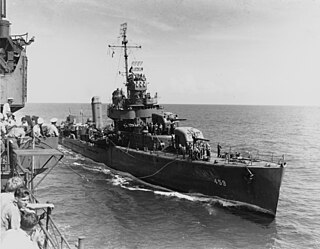 W
WUSS Laffey (DD-459) was a Benson-class destroyer of the United States Navy during World War II. She was the first destroyer named for Bartlett Laffey.
 W
WUSS Little (DD-79/APD-4), a Wickes-class destroyer in the United States Navy during World War I and World War II. She was the first Navy ship named for George Little (1754–1809).
 W
WUSS Monssen (DD-436), a Gleaves-class destroyer, was the first ship of the United States Navy to be named for Mons Monssen, who was awarded the Medal of Honor for his actions aboard USS Missouri (BB-11) in 1904. Commissioned in 1941, the destroyer saw service during World War II in both Atlantic and Pacific Oceans. Monssen was sunk at the Naval Battle of Guadalcanal on 13 November 1942.
 W
WUSS Northampton (CL/CA-26) was the lead Northampton-class cruiser in service with the United States Navy. She was commissioned in 1930, originally classified a light cruiser because of her thin armor but later reclassified a heavy cruiser because of her 8-inch guns. During World War II she served in the Pacific and was sunk by Japanese torpedoes during the Battle of Tassafaronga on 30 November 1942. She was named after the city of Northampton, Massachusetts, the home of former President Calvin Coolidge.
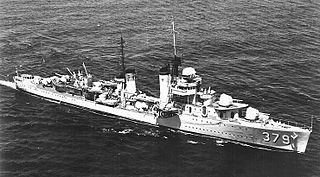 W
WUSS Preston (DD–379) was a Mahan-class destroyer in the United States Navy before and during World War II. She was the fifth Navy ship named for Lieutenant Samuel W. Preston (1840–1865).
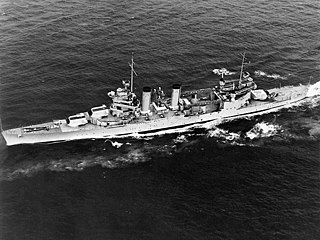 W
WUSS Quincy (CA-39) was a United States Navy New Orleans-class cruiser, sunk at the Battle of Savo Island in 1942.
 W
WUSS Serpens (AK-97) was a Crater-class cargo ship commissioned by the United States Navy for service in World War II. She was the first ship of the US Navy to have this name: she is named after Serpens, a constellation in the northern hemisphere. Serpens was manned by United States Coast Guard personnel and was responsible for delivering troops, goods and equipment to locations in the Asiatic-Pacific Theater.
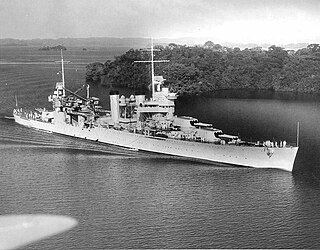 W
WUSS Vincennes (CA-44) was a United States Navy New Orleans-class cruiser, sunk at the Battle of Savo Island in 1942. She was the second ship to bear the name.
 W
WUSS Walke (DD-416) was a World War II-era Sims-class destroyer in the service of the United States Navy, named after Rear Admiral Henry A. Walke USN (1809–1896). Walke operated with the Neutrality Patrol in the Caribbean before World War II and fought in the Pacific Theater during the war before being sunk in the Naval Battle of Guadalcanal.
 W
WYūdachi was the fourth of ten Shiratsuyu-class destroyers built for the Imperial Japanese Navy under the "Circle One" Program.